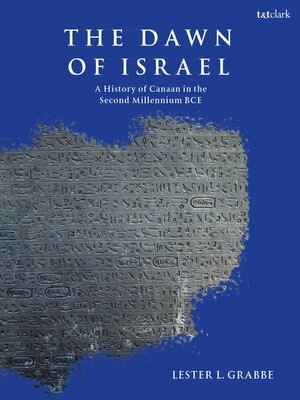
Sign up to save your library
With an OverDrive account, you can save your favorite libraries for at-a-glance information about availability. Find out more about OverDrive accounts.
Find this title in Libby, the library reading app by OverDrive.



Search for a digital library with this title
Title found at these libraries:
| Library Name | Distance |
|---|---|
| Loading... |
In this companion volume to his bestselling Ancient Israel: What Do We Know and How Do We Know It? Lester L. Grabbe provides the background history of the main ancient Near Eastern peoples and empires: Babylonia, Assyria, Urartu, Hittites, Amorites, Egyptians.
Grabbe's focus is on Palestine/Canaan and covers the early second millennium, including the Middle Bronze Age and the Second Intermediate Period and Hyksos rule of Egypt. Grabbe also addresses the question of a 'patriarchal period'. The main focus of the book is on the second half of the second millennium: Late Bronze and early Iron Age, the Egyptian New Kingdom, the Amarna letters, the Sea Peoples, the question of 'the exodus', the early settlements in the hill country of Palestine, and the first mention of Israel in the Merenptah inscription. Archaeology and the contribution of the social sciences both feature heavily, as does inscriptional and iconographic material. As such this volume provides a fascinating portrayal of ancient Israel and this definitive work by one of the world's leading biblical historians will be of interest to all students and scholars of biblical history.
Grabbe's focus is on Palestine/Canaan and covers the early second millennium, including the Middle Bronze Age and the Second Intermediate Period and Hyksos rule of Egypt. Grabbe also addresses the question of a 'patriarchal period'. The main focus of the book is on the second half of the second millennium: Late Bronze and early Iron Age, the Egyptian New Kingdom, the Amarna letters, the Sea Peoples, the question of 'the exodus', the early settlements in the hill country of Palestine, and the first mention of Israel in the Merenptah inscription. Archaeology and the contribution of the social sciences both feature heavily, as does inscriptional and iconographic material. As such this volume provides a fascinating portrayal of ancient Israel and this definitive work by one of the world's leading biblical historians will be of interest to all students and scholars of biblical history.







